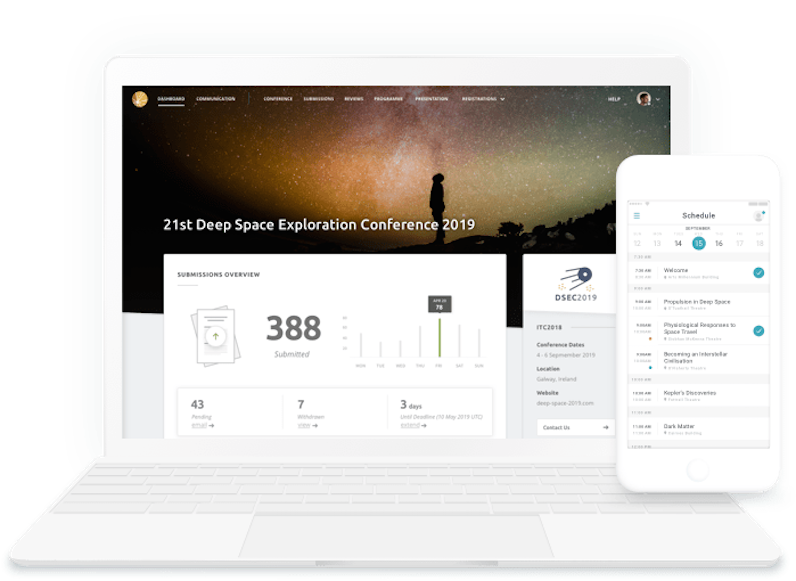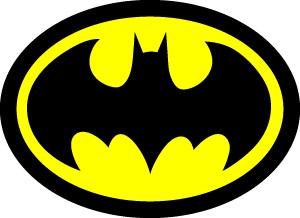Getting a conference logo designed? Read these 9 logo design rules first.
Google “get a conference logo designed” and you’ll be bombarded with options, from super-cheap logo generators to big-budget design agencies. But before you start looking at them or siphoning through hundreds of sample logos, get an understanding of some basic conference logo design rules.
If you’ve never been involved in conference logo design before, you’re probably not aware of just how much thought can go into designing a good one. And how much a bad one can reflect on the quality of the organisation or conference that’s associated with it.

Ugly Logos: “Design a logo about community” someone probably said…
The importance of your conference logo
If you’re using a conference logo, it’ll pop up on almost everything along the way. From your conference website and conference management system to tote bags and t-shirts, it’s going to be one of the main images delegates associate with your conference. In a world filled with conferences you want to find a logo that’s both strategic and thoughtful. So if you’re getting a logo designed for your conference, give it some real thought.
Cheap is always tempting, but it’s important to be aware that a lot goes into designing a good logo, and that kind of skill and effort doesn’t cost 5 euros. Cheap doesn’t work long-term. So when you’re setting out to design a conference logo, find one that you’re confident will be used in your branding for years to come.
Sites like 99designs offer logo design contests. And while you might get lucky picking an inexperienced designer online, paying a credible designer a fair price is the most likely way to get an effective conference logo. Consider looking for freelance designers in your area (ask to see a portfolio of their logo designs). And if you’re affiliated with a third-level institute, check if their communications office has a designer who can help.
Ultimately, what you choose will depend on your budget and your needs. But if a super-cheap option looks too good to be true, it probably is.

The Ex Ordo dashboard, complete with a conference logo
Follow these 9 basic conference logo design rules
Like a good winter coat, your conference logo should be simple and versatile. This icon will offer a first glimpse into what your delegates can expect from their conference experience and will be used to maintain the connections over time. Think about the different ways your organising committee may want to use it, then keep these basic rules for conference logo design in mind.
1. Decide what form your logo should take
A conference logo can be a wordmark (think, Coca-Cola), an illustration (Batman has a pretty memorable one), an abstract symbol (like the Adidas trefoil), or some combination of these.
2. Write a decent brief for your designer
Can you articulate what type of impression you want your conference logo to give delegates? Should it be thoughtful? Inspiring? Provocative? A good logo design brief can remove a lot of the pain from the process of creating yours. The brief often acts as the roadmap for everything that follows.
3. Your conference logo should not hurt the eyes
So no complicated illustrations and no clutter. Simple and straightforward, basic is better.
4. Your logo is not a technicolour dreamcoat
Keep colours to one or two, your logo should still work well in black and white. The really successful logos are simple graphics that complement the branding of the conference. Too many colours can break a logo.
5. Your logo should not be an illegible mess
Your conference logo needs to be easy to read whether it’s projected on-screen in between presentations or printed on a certificate of attendance.
6. Your logo should not be deeply unbalanced
In design, like in many things, balance is good. A balanced logo is one where the colours, illustration and size have an equal “weight” on each side.
7. Your conference logo should keep details to a minimum
A logo is not where you squash in all the details of your conference’s dates and venue. That’s what your conference website and invites are for. It should be small and simple enough to look good when printed on your conference badges.

Batman took great pains not to clutter his logo – and it worked. (Courtesy of Pixabay)
8. When it comes to shape, your logo should aim for average
You don’t want your logo to be too tall, or too wide.
9 And, finally, don’t abuse your logo
There’s a particular feeling you get when you’re at an event and faced with a logo that’s been stretched, rendered out-of-focus, or blown way bigger than it was designed to be. Whatever’s causing the problem, it’s not a good look for any logo.
Use the correct, high-resolution version of your conference logo. If you’re using your organisation’s logo and you’re not sure you have the right version, get in touch with their communications department. Get a copy of the logo in vector form if you want to project it or display it in a very large format.
Never distort a logo by stretching it. Scale it instead, so that the logo’s width and height keep the same ratio.
Want to learn more about logo design?
Got 5 minutes? This post should give you some idea of the cost of getting a logo designed.
Got 7 minutes? Dr Zen takes a squinty look at logos and conference posters.
Got 47 minutes? This 99% Invisible episode on logos, politics and passionate fans shows just how much thought can go into logo design.
